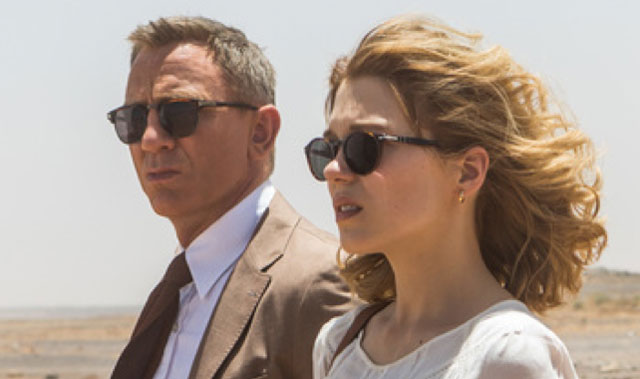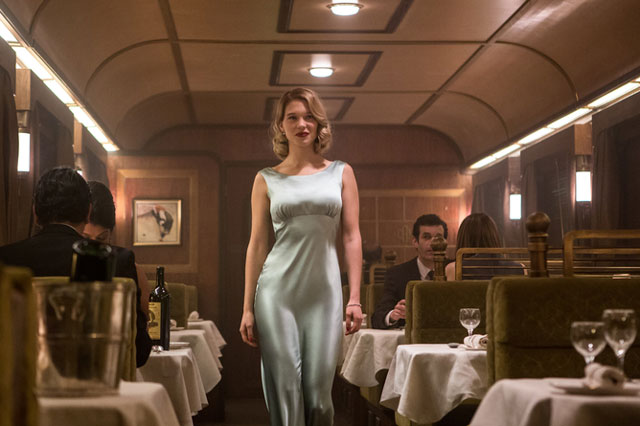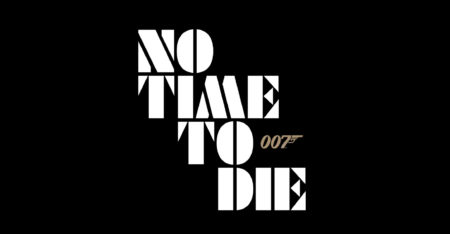
Bond is back! The staggering success of new 007 movie Spectre demonstrates three things.
First, audiences are increasingly willing to put up with longer running times (it clocks in at over two-and-a-half hours). Second, they’re flocking to see a film that is very similar to every other Bond picture made in the last 50 years. And third, audiences are still enthralled by the Bond franchise, even though it continues to portray women in a way that would have been considered outmoded 20 years ago.
Bond is nothing if not predictable, and that’s one of the reasons why audiences worldwide love him. The Bond franchise is an almost perfect example of what Theodore Adorno called the “culture industry”, the idea that culture could be created on a production line, almost like a car. He also argued that in a world of homogenised culture, people don’t really want things that are new; they want things that are almost exactly like the ones they already own.
No one goes to a Bond film expecting to see something new. People go because they know exactly what they’re going to get: a cocktail of girls, gadgets, violence and exotic locations. The producers have hit upon a formula that has lasted 50 years and has proved popular with audiences of all demographics.
They’ve done this by identifying exactly what audiences want, while being smart enough to tweak the formula just enough to allow Bond to change with the times. A good example is the rebooting of the franchise after the bloated Die Another Day (invisible cars, anyone?), to embrace the grittiness of the successful Jason Bourne movies.
One thing that remains the same is the “Bond girl”, although the fact that 20- to 50-year-old women are still being labelled “girls” should be raising a few eyebrows somewhere. Every Bond film since the 1970s has promised to revolutionise the Bond girl and bring something new to the table. But the table still looks pretty similar after all this time.
Much has been made of the fact that Spectre’s Monica Bellucci, at 51, is the oldest Bond girl yet (although she could easily pass for someone much younger). But her screen time in the film totals less than seven minutes and she’s primarily there for Bond to (a) get information from and (b) sleep with. This duality pretty much sums up the entire problem with the Bond films’ use of women from the 1960s to the present day: in terms of sexual politics, Bond is firmly stuck in the past.
Bond girls, to use that term, are less fictional characters and more well-dressed plot devices. They’re there to perform a number of fairly basic functions: to help keep the audience on board and to move the plot along. Often, they simply act as an audience surrogate.

If Bond is on his own (as most spies probably are for much of the time), certain parts of the narrative could quickly become confusing. Thankfully, a Bond girl is often there to ask the questions that are on the audience’s minds. What’s happening? What is Bond doing? What is the villain’s motivation? In this sense, Bond girls are fairly similar to Doctor Who companions.
Doctor Who actor Tom Baker once joked that he could have a talking cabbage as a companion as long as it could ask him: “What’s going on?” Perhaps the next Bond could have Apple’s virtual assistant, Siri, instead.
Damsels in distress
Another function of the Bond girl is to drive the plot forward by being in danger, and in need of rescue. Jinx, played by Halle Berry, was billed in the publicity for Die Another Day as a tough and resourceful spy. Nevertheless, she still found herself strapped to a gurney with a laser aimed at her (a nod to Goldfinger), and had to rely on Bond to rescue her.
Bond girls are also killed to give 007 an additional motive to go after the bad guy. Indeed, in many cases, their lives aren’t at risk until they become romantically involved with him. One night with Bond, however, usually gives them only a 50/50 chance of making it alive to the end credits.
In many cases, the women are the wives, companions or confidants of the villain. As a result, Bond shouldn’t be so surprised that by seducing them he confirms their death sentence — although Bond does make some modest effort to keep Spectre’s Monica Bellucci alive by giving her a phone number on a piece of paper before leaving her to her fate.

Again, these female characters are a way to demonstrate Bond’s masculinity. The logic goes that he is not only smarter and stronger than the villain, but also has more sex appeal, to the extent that the women simply can’t resist him despite their marital vows or former allegiances.
The added fact that some of these seductions, particularly his hay barn encounter with Pussy Galore, arguably resemble sexual assault or rape has been commented on before. Whether this has any influence on how viewers perceive sexual politics is open to debate, but it is possible that when films such as this this are so successful, it will have a broader influence on what Hollywood subsequently produces for the mass market.
One thing that has changed since the 1960s is the franchise’s habit of giving female characters wildly improbable names (although many are only allowed one name). Thankfully, writers now have moved away from using barely disguised double entendres, such as Pussy Galore (Goldfinger), Xenia Onatopp (GoldenEye) and Dr Holly Goodhead (Moonraker).
It seems that today’s sophisticated modern audiences are comfortable with the idea of women being treated as objects, but not with them having tacky names, too.![]()
- Matthew Ashton is lecturer in politics and international relations at Nottingham Trent University
- This article was originally published on The Conversation




